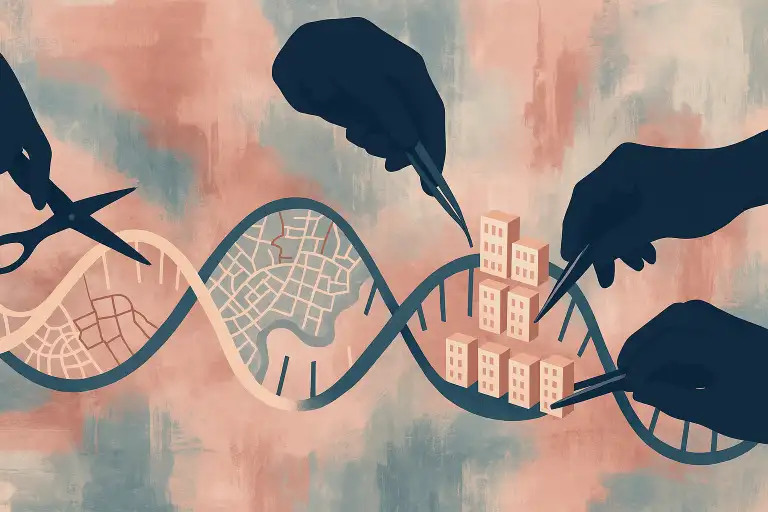The Real Estate Narrative That Won’t Die
For years, media reports have highlighted the growing property gap between Seoul and Busan. But behind the familiar statistics lies a deeper story — one of urban inequality, symbolic hierarchy, and a national imagination centered on the capital.

Busan, South Korea — Recent reports have once again highlighted the widening disparity in apartment prices between Seoul and Busan, South Korea’s two largest cities. As of May 2025, the average price per 3.3 square meters (one pyeong) of apartment space in Seoul has reached 25.4 million KRW, compared to 12.14 million KRW in Busan—a gap that has expanded from 2.1 times to 3.5 times over the past decade.
While the figures are striking, the narrative itself has become increasingly familiar. Major domestic media outlets routinely publish comparative statistics underscoring Seoul’s dominance in the housing market. Yet the frequency and framing of such reports have drawn criticism from observers who argue that the coverage may do more than reflect reality—it may help shape it.
Critics point out that the persistent focus on Seoul-Busan price differences reinforces a symbolic hierarchy between the capital and the regions, influencing not only public sentiment but also investment behavior and policy perception. As urban inequality deepens, attention is turning to how media representations contribute to a broader national narrative centered on Seoul, and what that means for the future of cities like Busan.
The Media Logic Behind the Persistent Gap Narrative
The continued emphasis on the real estate disparity between Seoul and Busan is often framed as objective economic reporting. However, the repetition and timing of such coverage suggest a more complex set of motivations—ones rooted not only in informing the public but in influencing sentiment, shaping behavior, and reinforcing long-standing urban hierarchies.
In South Korea’s highly digitized media ecosystem, real estate content occupies a uniquely influential position. Stories focusing on the Seoul-Busan divide consistently rank among the most viewed articles on major online portals. This is not coincidental. Such headlines often carry emotional weight, triggering reactions such as anxiety, urgency, and fear of missing out. Their viral potential ensures greater visibility within engagement-driven algorithms, allowing them to dominate digital news cycles regardless of the depth or nuance of their content.
Beyond reader engagement, this kind of reporting tends to align with the interests of powerful stakeholders. Investors, property developers, and even government ministries benefit from a narrative that emphasizes Seoul’s real estate resilience. The message—whether explicit or implied—is that Seoul remains a safe, rational, and profitable place to invest. Meanwhile, cities like Busan are subtly cast as cautionary tales or comparative backdrops, rather than autonomous urban centers with their own economic and cultural momentum. The repeated publication of such comparisons does not merely report disparity; it embeds a sense of inevitability into public consciousness.
Importantly, the framing of Seoul as the default locus of value also reflects deeper currents in national identity formation. In public discourse, Seoul is often depicted not just as the capital, but as a symbol of modernity, progress, and success. Its real estate market, then, becomes more than a reflection of supply and demand—it is treated as a national barometer, a shorthand for social ascent. By contrast, Busan is rarely afforded such symbolic status. Its portrayal is frequently reactive and relative, further reinforcing a narrative that views peripheral cities through the lens of their distance—economic, cultural, and psychological—from the capital.
Through these mechanisms, the media does more than relay market information. It participates in constructing and maintaining a social truth: that the future remains centered in Seoul, and that to live elsewhere is, in some unspoken sense, to fall behind. This dynamic deserves closer scrutiny, particularly in a nation grappling with demographic shifts, regional inequality, and questions of urban sustainability.
How Real Estate Became a Governing Logic
In South Korea, real estate has never been a politically neutral domain. For successive administrations, housing policy has functioned as both a barometer of public approval and a mechanism for economic control. The widening price gap between Seoul and regional cities like Busan is often treated as an unintended consequence of market forces, but in reality, it is deeply shaped—and at times, strategically amplified—by political decisions.
Governments of various ideological persuasions have long relied on property as a tool for stimulating growth. From expansive redevelopment incentives to first-home ownership programs and interest rate manipulations, housing has played a central role in fiscal and monetary agendas. Yet such interventions, far from equalizing opportunity across regions, have overwhelmingly benefited Seoul and its surrounding metropolitan area. Policies framed as “national” in scope have routinely translated into capital-focused advantages, further consolidating the city’s dominance in both perception and investment flow.
This concentration is neither accidental nor strictly economic. Politically, Seoul represents a highly visible battleground for legitimacy. The real estate market in the capital is not just a financial issue but a symbolic one—a referendum on a government’s capacity to manage prosperity, equity, and control over speculation. As such, every administration, regardless of party, faces pressure to either stabilize or boost the Seoul housing market, often to the detriment of long-term regional balance.
In this environment, cities like Busan are caught in a double bind. On the one hand, they are expected to grow, attract talent, and support the national economy. On the other, they remain structurally disadvantaged by policy inertia, speculative disinterest, and a media landscape that rarely affords them narrative centrality. As capital and attention continue to orbit Seoul, regional cities struggle to define their future outside the gravitational pull of the capital.
The result is a form of urban fatalism, in which the hierarchy between center and periphery is not merely accepted but normalized through cycles of political action and inaction. Real estate becomes more than a sector—it becomes a governing logic, shaping not only where people live and invest, but how they imagine the trajectory of their lives.
What These Headlines Reveal About South Korea’s Social Structure
In South Korea, where home ownership is tightly bound to notions of stability, status, and success, real estate is not merely a market—it's a cultural system. Within this system, headlines comparing Seoul to other cities do more than convey price data; they articulate and reinforce a symbolic order in which geography becomes destiny and capital becomes identity.
The Seoul–Busan gap, when repeated in media coverage, operates as more than just a reflection of regional economic disparity. It serves as a proxy for a broader national narrative: that value—both economic and existential—accumulates in the capital. This narrative, though rarely stated explicitly, is deeply internalized. To own property in Seoul is to participate in the upper rungs of a symbolic hierarchy. To own property elsewhere, or worse, to rent, is increasingly perceived as a mark of social and economic vulnerability.
Such dynamics are particularly acute in the case of Busan, a city that historically served as a wartime capital and still functions as a major logistics, cultural, and tourism hub. Despite its size and strategic significance, Busan’s role in national discourse is often framed in comparative terms—as trailing, catching up, or being left behind. Rarely is it discussed as a city with autonomous urban legitimacy. This rhetorical framing matters. It not only influences investment flows but also shapes how residents view their own future and their place within the national narrative.
The repetition of these headlines across time and media outlets builds what might be described as a “mythology of centralization.” In this mythology, Seoul is not merely the administrative capital; it is the metaphorical center of ambition, progress, and upward mobility. Busan, by contrast, becomes the perennial second, an urban space defined not by its own merits but by its distance from the capital—physically, economically, and psychologically.
This symbolic geography has tangible consequences. It affects migration patterns, talent retention, infrastructure investment, and even electoral politics. More critically, it reconfigures citizenship itself—not as a shared national condition, but as a gradient of spatial privilege. Where you live increasingly determines not just what you can afford, but what kind of future you are allowed to imagine.
The Media’s Role in Spatial Inequality
The persistent emphasis on Seoul’s real estate dominance and Busan’s relative lag is not merely a pattern of economic reporting—it is the ongoing construction of a national narrative that reflects, and subtly enforces, the spatial inequalities embedded in South Korea’s development model.
Within this narrative, Seoul is not simply a capital; it becomes the singular locus of ambition and legitimacy. Cities like Busan, though historically and economically significant, are repeatedly framed as secondary, existing primarily in comparison to the capital rather than in their own right. The result is not only the erasure of regional identity but also the erosion of belief in spatial fairness. For many living outside the capital, these headlines do more than inform; they injure. They turn life outside Seoul into a perceived compromise, not a legitimate choice.
Yet cities are more than price indexes or market trends. They are cultural, economic, and civic ecosystems—spaces where futures can and should be imagined. Busan is not a city in decline; it is a city pulled into the orbit of a national imagination too tightly focused on one urban center. It deserves to be understood as a core actor in South Korea’s future, not a comparative backdrop to the capital.
A more equitable urban future requires a shift—not only in policy but in narrative. Media must move beyond passive reporting of gaps and begin to question the systems that produce them. Journalism, at its best, does not merely measure disparities. It challenges the forces that deepen them.
To report the gap is easy. To examine its origins, implications, and alternatives—that is the responsibility now at hand.



Comments ()